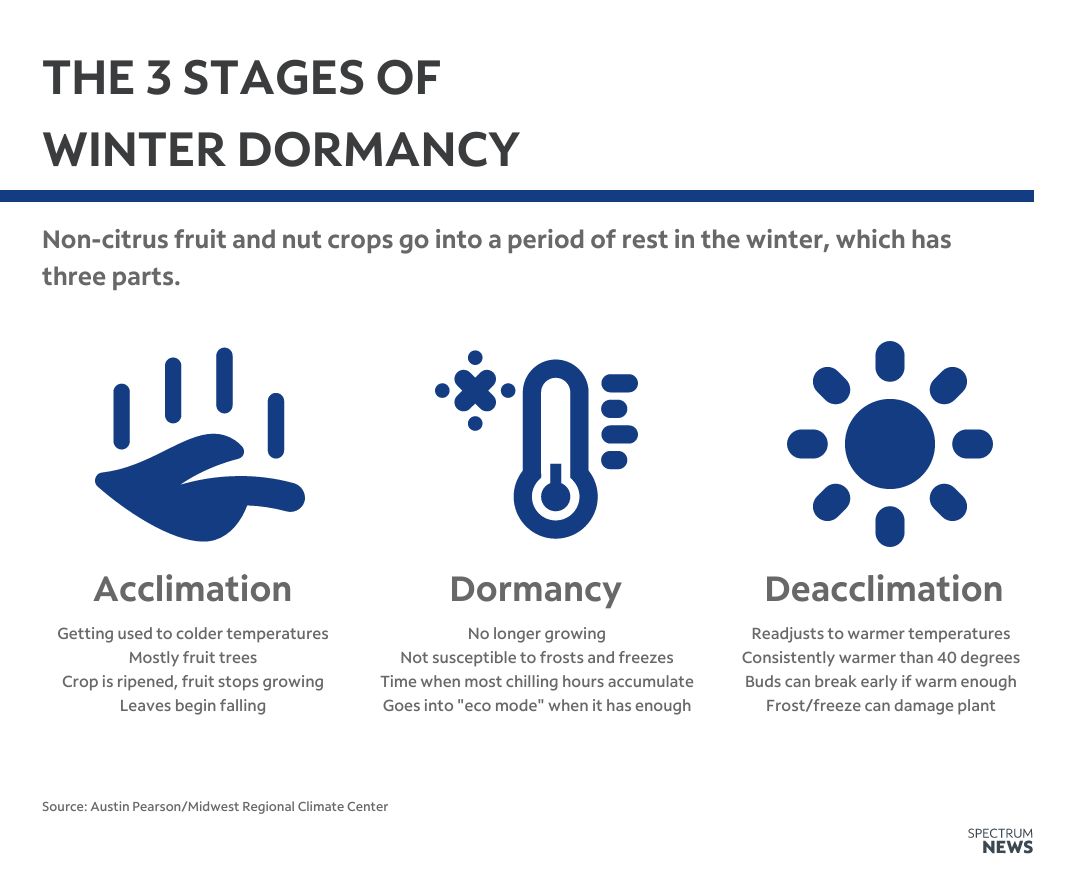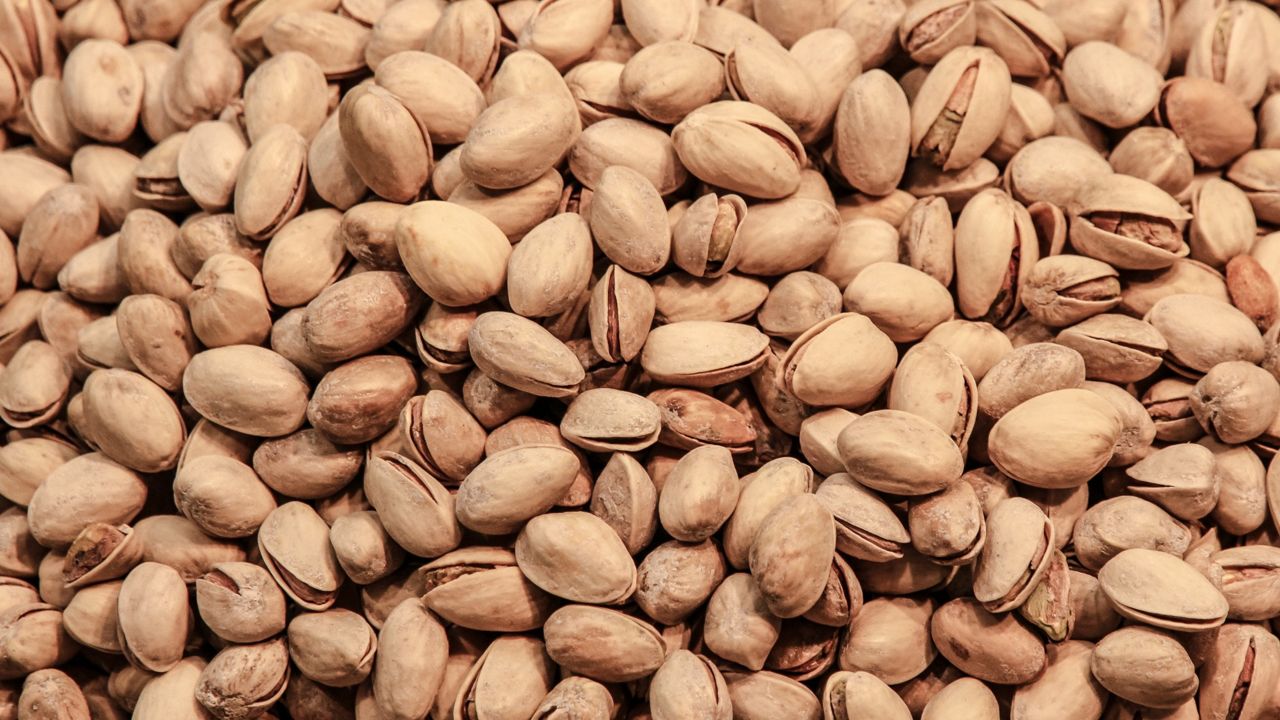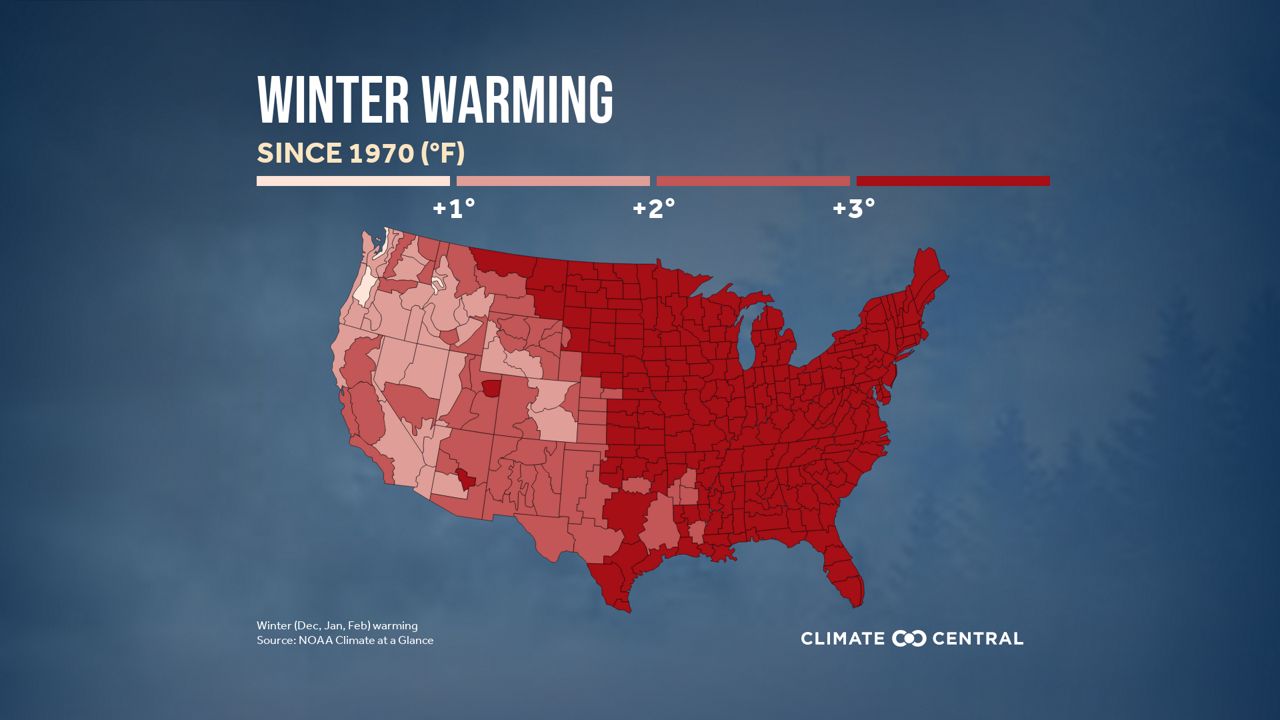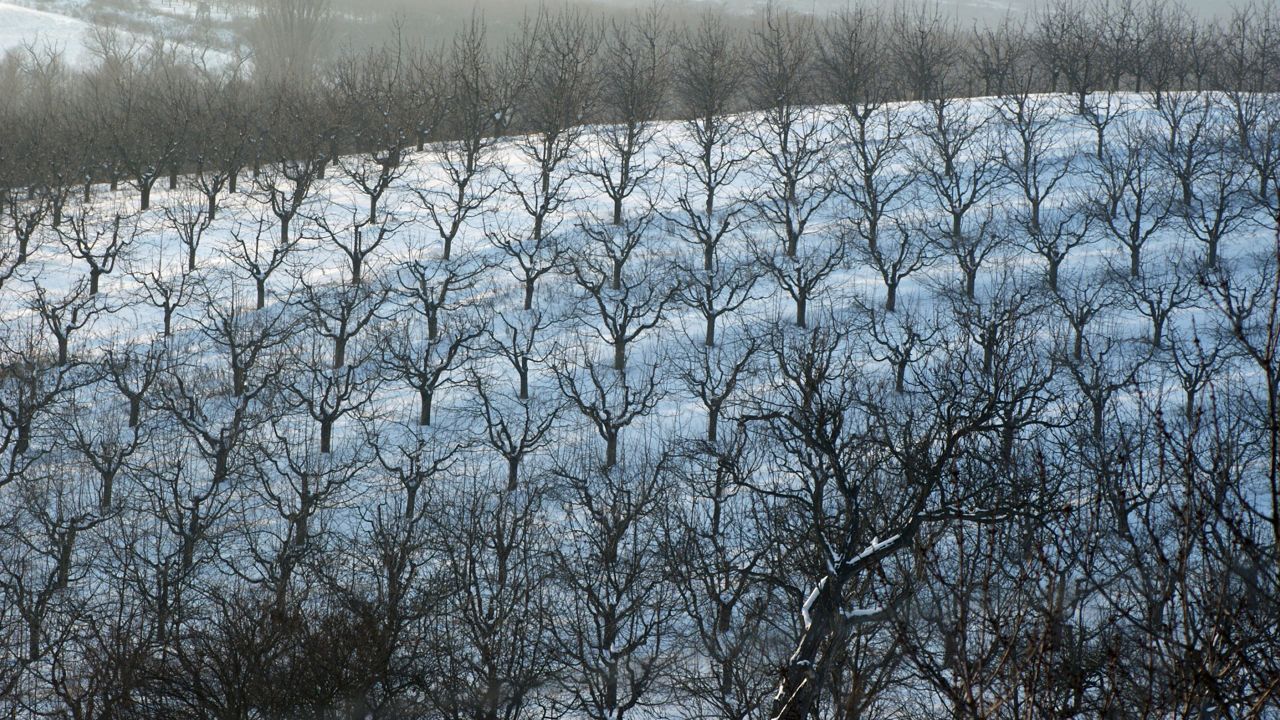What do apples, pistachios, strawberries and peaches have in common? They’re but a few of many plants that need the right number of hours in a narrow temperature range to produce a good crop of fruits or nuts each season.
In general, it’s the number of hours that the temperature is between about 35 degrees and 45 degrees, starting in the fall.
Different plants may have different temperature requirements. Strawberries need up to a few hundred chill hours, while apples need anywhere from a few hundred to a thousand, depending on the variety.
Austin Pearson, a climatologist with the Midwestern Regional Climate Center, says that chill hours are only relevant to perennial crops–plants that are in the ground year-round and exposed to the weather, like apple trees or almonds. Annual crops, such as corn and soybeans, aren’t in the ground in the winter.
Basically, think non-citrus fruits and nuts.
He says that these plants go through three dormancy stages: acclimation, dormancy and deacclimation.

Just like you’d expect to see with any kind of weather extremes, the plants won’t turn out as farmers want them to.
If an area hasn’t had enough chilling hours, the plants may experience delayed leafing and a lower yield. And if enough chill hours accumulate too early, temperatures warm up and then get cold again, the plants could become damaged, says Pearson.

The top five non-citrus fruits and nuts (grapes, almonds, strawberries, apples and pistachios) accounted for $20 billion in 2021, according to the USDA. Financial losses because of bad weather can add up quickly. For example, virtually all the almonds and pistachios in the U.S. come from California, so chill hours being out of whack in just that region has an outsized impact.
Many places that grow crops that need winter domancy have seen decreasing chill, according to Climate Central.

The effects of climate change have been varied, says USDA California Climate Hub’s Dr. Lauren E. Parker. Mostly, though, it’s been that warming winters mean not enough chill accumulation and plants don’t come out of dormancy at the right time.
She points to pistachios, which have male and female trees. “For pollination to be successful, they both have to bloom at the same time. But because male trees need more chill accumulation than female trees, they have been slow to develop their blooms and release their pollen because the warm winters have slowed the accumulation of chill. The result is erratic bloom, poor pollination success and ultimately reduced nut yield.”
People have bred certain traits into crops for a very long time, and developing more chill-forgiving cultivars is on that list.
The University of Florida has developed peaches that need as few as 100 chill hours. That’s just a fraction of many peach varieties, which often require over 500 chill hours.
Our team of meteorologists dives deep into the science of weather and breaks down timely weather data and information. To view more weather and climate stories, check out our weather blogs section.



